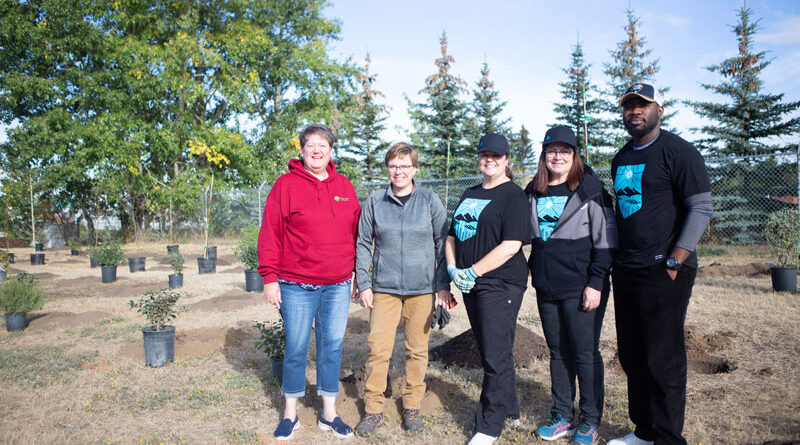Birth forest blossoms
By John Watson Local Journalism Initiative Reporter

John Watson Photo
Strathmore’s Communities in Bloom (CIB) planted another 45 trees in the birth forest on Sept. 17, to commemorate the new children born into Strathmore families this year.
Jennifer Neufeld, co-chair of CIB, said the annual event has seen trees planted along Centennial Drive for the past several years, following the original birth forest saturating its allotted space at Parkwood Park.
“We are planting 45 edible trees and shrubs to commemorate and honour all the babies born in the community this past year,” said Neufeld, who welcomed community members out to help plant the trees. “This might be our last year in this location, we will have to find a new location going forward but this is an annual project that we do that is supported by Connect First Credit Union and Eagle Lake Nurseries, and of course, the Town of Strathmore is huge in helping us with operations and digging holes.”
The team plants 45 trees each year as part of the project, though they do not know exactly how many children were born to the community this year.
Child deliveries also no longer take place at the Strathmore Hospital, and it seemed more appropriate to the team to plant trees as a collective project to honour all the kids instead of having people choose a tree for their child, in the case the plant does not survive.
As well as adding positive aesthetic value to the community, Neufeld explained the environmental impact over time makes a difference for the local area.
“There are a lot of ecological benefits and even a lot of wildlife in this location,” said Neufeld. “There are resident deer that come and live in here, and unfortunately, nibble on our trees and shrubs. But, since we have to live in nature, it’s exciting that they want to even be in town.”
Centennial Drive was chosen as the second location for the birth forest as it was previously an underutilized space backing onto an industrial area. Different to the first birth forest location, mainly edible trees and shrubs were planted.
Saturating the wide green space with trees works both to beautify the area and provide some additional separation between residential and industrial zones.
Among the trees planted during the 2022 planting were apples, plums, cherries, currents, highbush cranberries, saskatoon berries and honeyberries. Additionally, non-edible plants referred to as “nitrogen fixers” such as sea buckthorn have also been planted to help balance nitrogen levels in the soil.
